Fossils of Dinosaurs: A Detailed Exploration

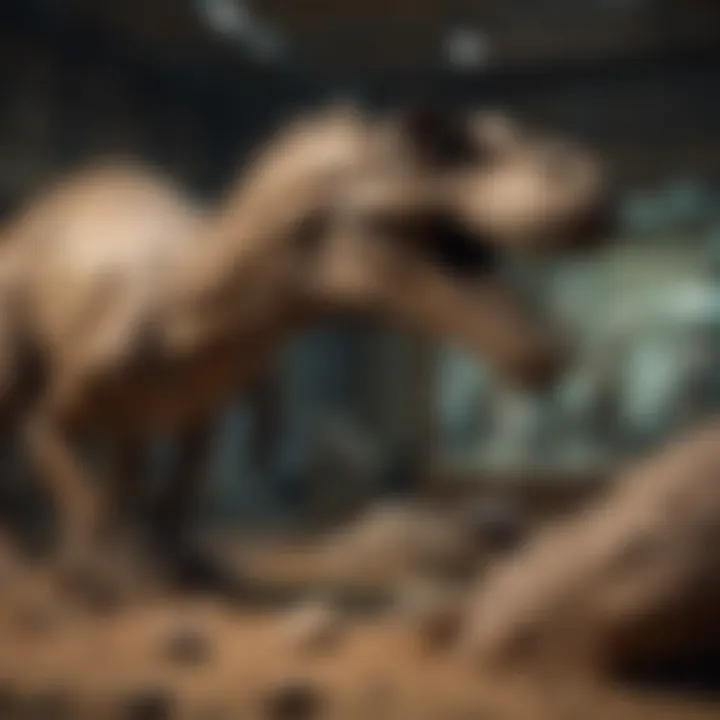
Intro
Fossils have a mysterious allure, a window into a world that once thrived with life. Among these relics, dinosaur fossils stand out as some of the most captivating remnants of our planet’s history. They offer not just a glimpse of what creatures once roamed the Earth but also insights into evolutionary processes, environmental conditions, and even climatic shifts of the past. The story of these fossils goes beyond mere discovery; it involves intricate processes of formation, preservation, and analysis that paleontologists and collectors engage with passionately.
In this exploration, we will take a close look at the intricacies of dinosaur fossils, discussing their types, how they form and endure through epochs, and the significance they carry in understanding our own history as a species. For those with a keen interest in rock and fossil collecting, this narrative serves as an invaluable guide, intertwining educational elements with the thrill of discovery and collection.
By the end of this article, enthusiasts will not only appreciate the beauty and mystery of fossilized remains but also gain an insightful comprehension of the ongoing research that makes paleontology an ever-evolving field. From rare findings to common types, recognizing their importance and unique beauty is essential for any collector.
Let’s embark on this journey that brings to light the fascinating details of fossils from ancient giants.
Preface to Dinosaur Fossils
Dinosaur fossils provide a remarkable glimpse into the ancient world, revealing secrets that help us piece together the stories of creatures that roamed the Earth millions of years ago. Understanding these fossils is paramount for rock and fossil collectors, educators, and anyone intrigued by the world of paleontology. They not only serve as remnants of the past but also offer invaluable insights into evolutionary biology, geology, and the very fabric of ecological history.
Defining Fossils
At its simplest, a fossil is the preserved remains or traces of ancient life. These remnants take many forms, from bones and shells to the imprints left by movements of creatures. Fossils encapsulate the history of life on Earth, showcasing variety and adaptation through the ages. Recognizing what specificaly earns the label "fossil" is essential; it must have endured through time, often through complex processes that betray its original form.
For dinosaurs, fossils are typically classified as either body fossils or trace fossils. Body fossils include the actual remains of the dinosaurs, such as bones and teeth. Simultaneously, trace fossils include the evidence of behavior, like footprints or nesting sites. Understanding these definitions and classifications is crucial for collectors wishing to focus their efforts in the realm of paleontology.
Importance of Dinosaur Fossils
The significance of dinosaur fossils cannot be overstated. They are key to unraveling the planet's historical narrative and understanding how life has evolved over monumental time scales. Here are some considerations on why these fossils matter:
- Connection to Evolution: Fossils act like a jigsaw puzzle, piecing together how dinosaurs adapted to their environments over time. This helps scientists understand the evolutionary processes that led to modern species.
- Geological Insights: Studying the layers of rock where dinosaur fossils are found helps geologists learn about Earth’s history, such as climate changes and geological events.
- Cultural Impact: Dinosaurs have a profound impact on popular culture. Their fossils ignite curiosity and draw people into the realms of science and natural history.
"Fossils of dinosaurs shine a spotlight on our Earth's ancient narrative. They whisper stories about survival, adaptation, and extinction, each fossil a page in the vast book of life."
Types of Dinosaur Fossils
Dinosaur fossils come in various forms, each offering unique insights into the lives of these magnificent creatures that once roamed our planet. Understanding the types of dinosaur fossils is not just an academic exercise; it provides crucial clues to reconstructing an ancient ecosystem. Whether it’s the sturdy skeletons or the delicate traces of life left behind, every type of fossil adds a piece to the puzzle of our prehistoric past.
Body Fossils
Body fossils are what most people envision when they think of fossils. These are the actual remains or physical parts of dinosaurs, showcasing their anatomical structures. They come in several forms:
Skeletons
Skeletons stand out as perhaps the most recognizable type of body fossil. What makes skeletons essential in studies of dinosaurs is their ability to disclose the overall size, shape, and structure of these magnificent beasts. With each spine and rib, the blueprint of a creature's life unfolds.
Skeletons are often discovered remarkably intact, allowing paleontologists to piece together a dinosaur’s posture, its movement, and sometimes even its mode of life. For example, the skeleton of Tyrannosaurus rex provides insight into its predatory nature, hinting at how it might have hunted and interacted within its environment. This type of fossil is not only popular among the scientific community for its rich informational value, it also captures the public’s imagination in museum displays.
However, the downside is that such skeletons can be scarce. Conditions must be precisely right for them to remain intact and not be destroyed over eons. So when a skeleton is found, it is often a significant event in paleontology.
Teeth
Teeth are another crucial component of body fossils and sometimes offer even more information than other skeletal remains. They can shed light on a dinosaur's diet—whether it was a carnivore, herbivore, or omnivore. For instance, the distinctive serrated edges of Allosaurus teeth reveal its predatory habits, while the flat grinding surfaces of a hadrosaur’s teeth suggest a diet rich in vegetation.
One major characteristic of dinosaur teeth is their resilience; they tend to survive well, even in fragmented conditions. This makes teeth particularly beneficial for understanding the diversity of dinosaurs over time. One unique feature is that teeth can also indicate the age of a dinosaur when it died, offering a timeline of its life cycle.
Nevertheless, while teeth provide significant data, they can sometimes be challenging to contextualize without accompanying bone structures, leading to ambiguous conclusions about the dinosaur’s general physiology
Skin Impressions
Moving away from the more solid remains, skin impressions add a layer of detail that fossils like bones and teeth cannot provide. These traces may show textures, scales, or even feathers that give life to how dinosaurs looked. Skin impressions can indicate the type of environment they lived in, how they adapted to various conditions, and even their social behaviors if grouped impressions are discovered.
What makes skin impressions particularly valuable is their rarity. These delicate fossils can survive only under specific conditions, meaning that when found, they provide incredible insights into the skin textures and possible coloration of these ancient animals. However, interpretation can be complex; the lack of skeletal structures limits our understanding of how the skin related to the dinosaur's overall biology.
Trace Fossils
While body fossils provide insight into the physical forms of dinosaurs, trace fossils reveal behavior patterns, social structures, and environmental interactions. These can include a host of indicators:
Tracks and Traces of Movement
Tracks are invaluable for understanding a dinosaur's behavior and locomotion. Dinosaur tracks can reveal their size, speed, and even social interactions. The arrangement of footprints can suggest whether dinosaurs traveled alone or in herds, giving us insights into their social dynamics.
The uniqueness of track fossils lies in their ability to preserve not merely the physicality of the creature but also the moment it existed. Tracks can even capture the depth and gait, offering possible clues about the dinosaur’s health or age. However, understanding trackways can sometimes be puzzling, as different species may leave similar imprints.
Nesting Sites
Nesting sites are a rich source of knowledge regarding reproduction and parental care among dinosaurs. Finding nests complete with eggs provides insight not only into the reproductive behavior of dinosaurs but also valuable information about their developmental stages. Some nests found in what is now Mongolia showed an arrangement that suggests parental care, signaling complex social structures akin to those seen in modern birds.
Despite their importance, nesting sites can be hard to locate and often require careful digging and examination to make the most of the findings.
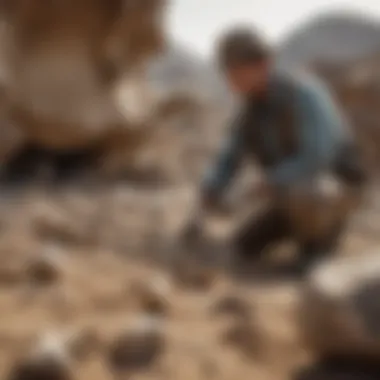

Dung Fossils
Dung, while perhaps surprising, offers a wealth of information about ancient diets and ecological interactions. Called coprolites, fossilized dung can contain seeds, bones of prey, or even plant material. This provides a window into the dietary habits of a dinosaur and its role in the ecosystem.
The unique feature of dung fossils is their ability to preserve organic material that might otherwise decompose. But they come with their challenges. Interpretation can be difficult, as the contents may not always faithfully represent the dinosaur’s usual diet.
"Fossils tell a story—a tale written in the rocks of time, revealing not just how dinosaurs looked, but how they lived and thrived."
By dissecting the various types of dinosaur fossils, collectors and enthusiasts can appreciate the complexity and richness of our planet's history far more clearly. These insights hang as a testament to the ancient giants while enriching our understanding of the world today.
Fossilization Process
Understanding the fossilization process is like putting together an intricate jigsaw puzzle. Each piece, from the conditions that favor fossilization to the stages it undergoes, is pivotal in creating a complete picture of how these remnants of ancient creatures come to be preserved in the geological record. Comprehending this process not only aids paleontologists in their work but also enhances our appreciation of the fossils we encounter as collectors and enthusiasts.
Conditions Favoring Fossilization
Fossilization doesn't just happen anywhere; it requires specific conditions that can be quite rare. To start, certain environmental factors are essential:
- Anoxic Environments: Areas with low oxygen levels help slow down the decomposition process. This is crucial for preserving organic materials before they are buried beneath layers of sediment.
- Rapid Burial: Quick sedimentation protects remains from scavengers and weathering, significantly increasing the chance of preservation.
- Mineral-Rich Water: Water that contains a variety of minerals assists in the petrification process by replacing organic material with minerals, turning once-living tissues into stone.
These conditions highlight the delicate balance necessary for effective fossilization. Without them, the remains of dinosaurs could simply rot away without leaving traces for future generations to discover.
Stages of Fossilization
Fossilization unfolds through several crucial stages, each serving a distinct purpose that contributes to preserving the evidence of life long ago.
Decay
At the onset, decay plays a vital role. During this phase, soft tissues begin to break down due to microbial activity. This may seem counterintuitive, but recognizing this stage helps scientists understand what materials are left for fossilization. The key characteristic of decay is that it begins the transformation process, allowing more resilient parts, like bones, to remain intact longer.
While decay might not seem beneficial, it serves as a necessary step that highlights the fragility of biological remains. Without this stage, the remains might be left exposed, subject to the elements or scavengers. This peculiar duality of decay shows us that even when something is falling apart, it can still lay the groundwork for fossilization.
Burial
Once decay begins to take hold, burial is the next stage. Sediments gradually cover the remains, providing much-needed protection. One notable aspect of burial is the types of sediments involved. Different sediments can affect the preservation state of the fossil itself. For instance, fine silt may offer a better preservation state than coarse sand, which might allow for more airflow and faster decay.
This phase's unique feature is the role of geological processes, such as tectonic shifts, which can further alter burial conditions. While burial aids in preserving the remains, it may also subject them to geological pressures that complicate fossil preservation. But ultimately, this stage is fundamental in safeguarding what might otherwise be lost to the ravages of time.
Mineralization
The final stage, mineralization, is when things get particularly fascinating. During this stage, groundwater laden with minerals infiltrates the buried remains. Through a replacement process, minerals gradually fill in cellular spaces, creating a hardened replica of the original organism. This preservation often results in stunningly detailed fossils that tell us much about past life.
The remarkable thing about mineralization is its ability to turn organic tissue into stone, often retaining intricate details like cellular structures. However, while this results in strong, durable fossils, it can also lead to minerals that distort the original structure if the process is too rapid or uneven. Nonetheless, mineralization remains a cornerstone of understanding the fossilization process, representing the fascinating intersection of life and geology.
"Fossilization is not an accident; it’s a complex interplay between life and the environment, shaping how we read the ancient past."
In summary, the fossilization process is essential for a thorough understanding of dinosaur fossils. Each stage, from the favorable conditions that set the stage, to the decay, burial, and mineralization, holds significance that helps us piece together Earth's intricate history. The details matter immensely in paleontology. Understanding these finer points is what makes a fossil truly come alive for those like us who are captivated by these ancient wonders.
Methods of Discovery
The journey of unveiling dinosaur fossils is not just about luck; it involves meticulous methods of discovery that combine traditional techniques and modern technology. Understanding these methodologies enhances our appreciation for paleontological work and its intricacies. Each method, whether it be through hands-on excavation or high-tech imaging, plays a vital role in unearthing and analyzing these ancient remnants, shedding light on our planet's prehistoric past.
Field Excavation Techniques
Excavation is the backbone of fossil discovery. Paleontologists employ a variety of field techniques to carefully extract fossils while minimizing damage. The process typically begins with site surveys—walking over potential areas of interest and collecting surface samples. This stage is crucial; a keen eye can spot a fossilized bone protruding from rocky soil or an embedded tooth in clay.
Once a promising site is identified, researchers begin the intricate process of digging. To avoid harming fragile specimens, tools like trowels, brushes, and even dental picks are used. The trick is to keep a steady hand and a cautious heart. Each layer of sediment removed is documented, as it holds valuable context regarding the environment in which the creatures lived. Setting up grid systems allows for precise mapping of where each fossil is unearthed, ensuring that the data can be analyzed later for clues about behavior, habitat, and more. In short, field excavation is both art and science, requiring patience, skill, and sometimes a bit of luck!
Utilizing Technology
In recent years, the field of paleontology has seen an influx of new technologies that revolutionize fossil discovery and analysis. These tools help paleontologists delve deeper into sites and improve the accuracy of their findings.
Ground-Penetrating Radar
Ground-Penetrating Radar (GPR) stands out as a pivotal tool in paleontological exploration. This technology allows researchers to survey subsurface geology without disturbing the ground. GPR works by sending pulses of radar waves into the ground. When these waves hit different materials, they reflect back, revealing the layout of buried structures.
One of the key characteristics of GPR is its ability to provide a non-invasive look beneath the soil, making it an invaluable choice for fossil hunters. The advantage of this technology is clear: it can identify fossil-rich layers without any excavation, which preserves the integrity of the site until researchers are ready to dig.
However, it’s not without drawbacks. GPR’s effectiveness can be influenced by soil composition. Highly conductive materials can dampen radar signals, making it harder to pinpoint fossil locations. Despite this, when conditions are right, GPR can reveal extensive fossil beds, making it a popular choice among contemporary paleontologists.
3D Scanning
3D Scanning technology is another exciting advance for paleontological research. By capturing highly detailed images of fossil specimens, 3D scanning allows scientists to create accurate digital models. This not only aids in analysis but also promotes sharing and collaboration within the scientific community.
The key feature of 3D scanning is its ability to preserve minute details of a fossil's surface, which can be critical in identifying species or understanding growth patterns. The advantage here is precision; even the slightest textures can be documented and analyzed without physical wear on the specimen.
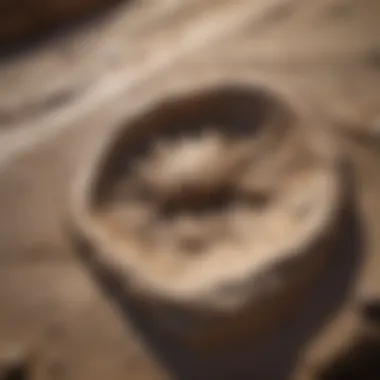

That said, there are challenges associated with this technology. The cost of high-quality scanners can be prohibitive for some institutions, and scanning larger fossils can require complex setups. Nevertheless, the benefits of 3D modeling—making fossils accessible to researchers worldwide—often outweigh the challenges. It truly opens up new avenues for research.
"Utilizing modern technology like GPR and 3D scanning, scientists are peeling back the layers of our planet’s ancient history with finesse and insight."
Preservation and Curation
In the world of paleontology, the preservation and curation of fossils are pillars that support scientific understanding and public engagement with dinosaur history. Left unchecked, dinosaur fossils can deteriorate due to environmental factors like moisture, temperature variations, and even biological attacks from microbes. The need for meticulous preservation methods cannot be overstated. As guardians of our planet's biological narrative, researchers employ numerous techniques to ensure these ancient remains endure for future generations.
Through preservation, scientists can maintain the integrity of the specimens, which is crucial for research and education. Each fossil tells a story of its environmental context and biological characteristics. Without proper preservation, much of this vital information could be lost, marking a significant step back in our efforts to comprehend the earth's past.
Methods of Preservation
Preservation methods can be broadly categorized into chemical treatments and storage techniques. Each method plays a unique and indispensable role in keeping fossils intact, ultimately supporting the goals of research and education in paleontology.
Chemical Treatments
Chemical treatments are crucial for stabilizing fossils that might otherwise degrade. One of the principal aspects that set chemical treatments apart is their preventive nature. By applying certain stabilizing agents, paleontologists can halt deterioration processes that have already begun. For example, polyethylene glycol is famous for penetrating porous materials, making it particularly beneficial for fossils that are brittle or subject to fracturing.
A key characteristic of chemical treatments is their versatility. They can be tailored to suit a variety of fossil types, from minute bone fragments to large, complete skulls. This tailored approach is a significant reason chemical treatments are often favored in preservation strategies. However, these techniques come with challenges.
A unique feature of chemical treatments lies in the potential for altering the fossil’s original chemistry, which may lead to unforeseen changes in color or texture, thus temporarily compromising the authenticity of the specimen. Scientists must tread carefully, weighing the benefits against the risk of changing the object they aim to preserve.
Storage Techniques
Storage techniques are as vital as the chemical treatments themselves. Properly storing fossils ensures that they are shielded from environmental hazards and mechanical damage. One vital aspect of storage is climate control. Fossils are often kept in temperature and humidity-controlled environments where fluctuations are minimized.
A notable characteristic of effective storage techniques is the use of specialized containers made of inert materials. Archival-quality storage boxes can prevent chemical reactions that might arise from using standard materials, thus preserving the fossils over time. Such methods are quite beneficial, as they mitigate the risk of further degradation due to noxious vapors or physical impacts.
However, there are downsides. For one, establishing and maintaining a controlled environment can be resource-intensive, requiring consistent monitoring and adjustment. There are also issues with space; a collection can quickly outgrow available storage, forcing curators to make tough decisions on what to keep or which pieces require immediate attention.
Curation Practices in Museums
Curation is where preservation meets education. In museums, fossils are not merely stored away; they are curated to engage the public and facilitate learning. Curators follow strict guidelines to document each specimen, including information on its provenance, condition, and treatment history.
The significance of effective curation practices can’t be underestimated. They ensure that fossils are categorized, preserved, and displayed thoughtfully, allowing the public to connect with the ancient world. Curators often develop exhibitions that showcase these remarkable specimens, providing context through carefully crafted narratives about their origins and implications in the broader scope of evolutionary biology.
"Good curation is like a well-tuned instrument. It not only preserves the past but also resonates with the values of the present."
Meanwhile, curators must navigate the intersection of academia and public interest, fostering a deeper appreciation for these remnants of life that lived millions of years ago. The challenges are real — considerations around ethical acquisition, restoration debates, and security for valuable items are common hurdles to frame in their stewardship.
Significance in Evolutionary Biology
In the grand tapestry of life's history on Earth, dinosaur fossils serve as vital pieces of the puzzle when it comes to understanding evolutionary biology. These remnants provide a window into a time when these magnificent creatures roamed the planet, and through careful study, researchers can unravel the complex lineage of species that traces back millions of years.
Understanding Dinosaur Evolution
Dinosaur fossils hold clues that help scientists piece together the evolutionary patterns that have shaped life on Earth. They provide evidence about how dinosaurs adapted to their environments over time, what their diets may have been, and how they interacted with one another. For example, the discovery of small, feathered dinosaurs not only challenges the traditional views of dinosaur appearances but also suggests a link to modern avian species, revealing the process of evolution in real-time.
A key figure in this area of study is the late paleontologist Robert Bakker, who argued for a more dynamic view of dinosaurs as warm-blooded creatures rather than the sluggish, cold-blooded reptiles once believed. His interpretations, based on fossil evidence, have redefined how we understand dinosaur behavior and physiology, touching on herbivory, predation, and social structures.
Moreover, through comparative anatomy of fossils, scientists can determine the evolutionary relationships among diverse groups of dinosaurs. By examining similarities and differences in bone structures, researchers can formulate hypotheses about which species are more closely related. There’s a saying among paleontologists: "Fossils are the history books of nature," and indeed, they tell stories of survival and adaptation in the face of changing environments.
Cladistics and Phylogenetic Analysis
Cladistics, a method of classifying species based on shared characteristics, plays a critical role in evolutionary biology, particularly when analyzing the complex web of relationships among dinosaurs. This technique creates a tree-like structure, known as a cladogram, that represents the evolutionary pathways leading to different dinosaur groups.
Phylogenetic analysis, in turn, is a powerful tool that helps scientists hypothesize about the evolutionary trajectories of various species based on fossil evidence. For instance, when examining the shape of dinosaur skulls, such as those from the Triceratops and Pachycephalosaurus, scientists can deduce their evolutionary relationships and behavioral strategies. The unique features observed in different taxa illuminate how the process of evolution guided the development of specific traits.
As scholars explore these evolutionary relationships, they often encounter debates around classification, particularly concerning controversial species like the Therizinosaurus. Its unusual claws and body structure prompt discussions about how to best classify it within the dinosaur family tree, showing that our understanding of these ancient creatures is continually evolving.
"The study of fossils is like piecing together a puzzle where the edges are hidden; each discovery brings a piece of the picture into focus."
Challenges and Controversies
The realm of paleontology is often mired in challenges that demand both rigorous scientific inquiry and an understanding of broader societal implications. When examining the fossils of dinosaurs, researchers face numerous controversies that can shape our comprehension of ancient ecosystems and the evolutionary pathways of these magnificent creatures. Understanding these challenges is not merely for academic curiosity; it provides insight into the scientific process, the ever-evolving narrative of Earth's history, and how public perceptions can be influenced by scientific discourse.
Debates in Paleontology
Paleontology, like many sciences, is not devoid of disagreements. One such debate centers around the classification of dinosaur species. As new fossil findings come to light, the classification of existing species is sometimes called into question. For instance, fossils initially believed to belong to a distinct species may later be determined to be variations of a more widely known dinosaur.
- Morphological Variability: Many think that the physical features of dinosaurs can vary widely due to age, sexual dimorphism, or environmental factors. This variation complicates classification and can lead to different interpretations of the fossil record.
- The Role of Technology: Technology integrates into these debates, offering advanced tools for analysis. Consider the use of CT scans that can reveal intricacies in fossilized bones previously overlooked. However, this advancement also leads to differing opinions on the interpretation of data—some argue new technology pushes the boundaries of established science while others view it as a necessary evolution.
These debates can sometimes take center stage in the scientific community, influencing funding, research directions, and even the training of future paleontologists. The ramifications of such controversies escape the confines of laboratories, reaching into the public’s understanding of earth’s history.
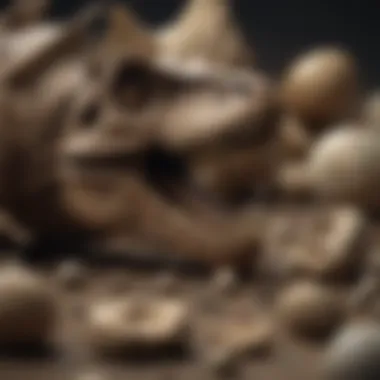
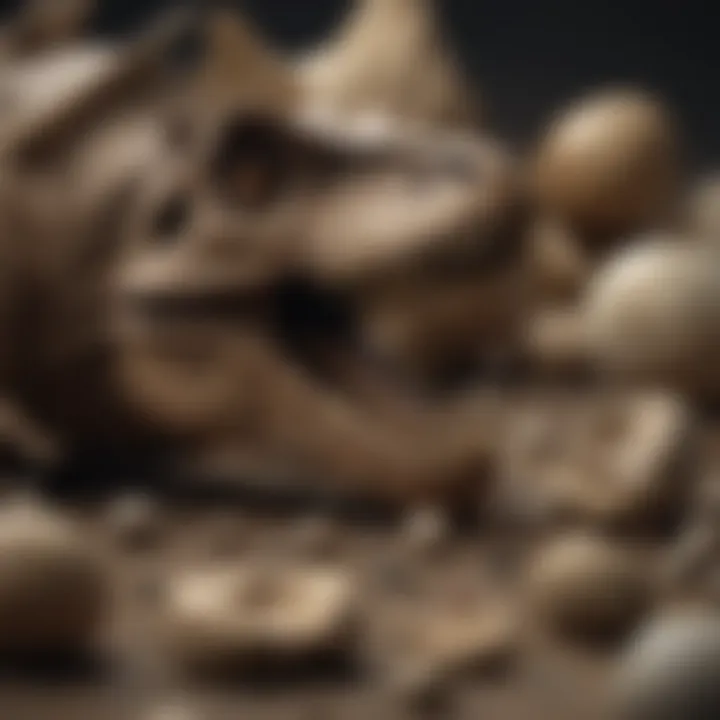
The Impact of Climate Change
Consider how climate change etches itself into the narrative of ancient life. Fossil records inform us that dinosaurs thrived in diverse climates but were not immune to climatic fluctuations. Presently, as we grapple with rapid climate change, acknowledging historical patterns can provide context for today’s concerns.
- Extinction Events: Events like the Permian-Triassic extinction offer a grim reminder of how climate fluctuations influenced ecosystems. These catastrophes, attributed largely to dramatic climate shifts, unveil insights that continue to resonate with contemporary environmental issues. Understanding these past events can act as a window into how current biodiversity and ecosystems might adapt—or struggle—in the face of ongoing climate stresses.
- Preservation Issues: Climate change also alters the landscape of fossil discovery and preservation. As rising sea levels and changing weather patterns affect sedimentation processes, potentially important fossil sites face new threats. Collectors and researchers must adapt and innovate to ensure these treasures from the past remain accessible for future generations to study and appreciate.
"Historical climatic shifts molded the world, dictating which species thrived and which vanished. To overlook these lessons as we face similar challenges today would be a grave mistake."
Thus, the challenges and controversies surrounding dinosaur fossils offer a vast playground for inquiry, debate, and relevance. They underscore the importance of rigorous research and adaptability in the face of changing scientific evidence and global circumstances.
Case Studies of Significant Fossils
The study of dinosaur fossils not only thrills enthusiasts but also shapes our understanding of these magnificent creatures. Case studies serve as pivotal examples, providing insight into how paleontologists connect the dots regarding evolution, behavior, and the environment of dinosaurs. By looking closely at specific finds, we can appreciate the methods, challenges, and scientific triumphs involved in paleontological work. These examples reveal not just the fossils themselves, but also the narratives and the technological advancements that have allowed us greater access to the distant past.
The Discovery of Sue the T. rex
Sue the T. rex is a striking illustration of the transformative power of fossil discoveries. Found in 1990 in the badlands of South Dakota, Sue is one of the most complete and well-preserved Tyrannosaurus rex skeletons ever discovered. The significance of this fossil stretches beyond its physical structure; it captures attention through its rich history. The initial discovery was somewhat accidental, made when a team led by paleontologist Sue Hendrickson stumbled upon the skeleton while searching for fossils. They uncovered a trove of about 90% of Sue’s bones, a feat akin to finding a needle in a haystack.
Once excavated, the fossil revealed much about the behavior and lifestyle of this iconic predator. Studies of Sue's bones provided insights into her age, diet, and even her potential injuries, showcasing how fossilized remains can tell a detailed story. Moreover, the underpinning science of bone histology emerged from examining Sue's structure, shedding light on growth patterns in dinosaur biology that lacked clarity in prior studies. The exposure afforded by displaying Sue in Chicago's Field Museum has further popularized paleontology, drawing in visitors and fostering a deeper appreciation for the prehistoric world.
"Sue captures the imagination. She shows us not just what dinosaurs looked like but also gives their existence a personal touch."
Hadrosaur Finds in Alberta
The hadrosaur, or duck-billed dinosaur, finds in Alberta are another crucial focus in understanding dinosaur diversity and evolution. Alberta is home to numerous fossil sites, rich in hadrosaur remains. These dinosaurs, with their distinctive flat skulls and herbivorous diets, flourished during the Late Cretaceous period. Discoveries in this region, especially around the Dinosaur Provincial Park, have provided vast collections of fossils that help us study hadrosaur life and behavior.
Among the notable finds is Edmontosaurus, a prominent hadrosaur species. The remains found here are invaluable, prompting researchers to analyze everything from dietary habits to potential social behavior, such as herding. The numerous finds have also highlighted variations in size and physiology among different hadrosaur species, indicating that they adapted well to their environment.
These discoveries not only contribute to the scientific understanding of hadrosaurs but also intrigue rock and fossil collectors drawn to Alberta’s rich fossil beds. Through fieldwork and excavation, enthusiasts gain first-hand experience in unearthing materials that have global paleontological significance. Studying these fossils underlines the correlation between local geology and the existence of diverse life forms, enhancing our appreciation for both history and the Earth's changing landscape.
In sum, case studies like Sue the T. rex and the hadrosaur discoveries in Alberta provide rich narratives that reveal the complexities of dinosaur life. They remind us why each fossil is more than just ancient remnants; they are essential pieces of Earth's ecological puzzle.
Dinosaur Fossils and Pop Culture
The intersection of dinosaur fossils and popular culture reveals a unique interaction that shapes our understanding and interpretation of these ancient creatures. Dinosaur fossils capture the imagination, inspiring everything from blockbuster movies to children's toys, while also influencing academic perspectives in subtle yet profound ways. This section explores how dinosaurs have been represented in media and the implications of this visibility on the perceptions surrounding fossils themselves.
Representation in Media
From the moment films like "Jurassic Park" hit the silver screen, dinosaurs became mainstream icons, embedding themselves into the fabric of popular culture. These representations often highlight the grandeur and mystery of dinosaurs, but they can also distort certain truths about them. Movies tend to portray dinosaurs as larger-than-life creatures, which, while entertaining, can create misconceptions about their actual size, behavior, and extinction.
Books and television programs have also taken a swag at interpreting dinosaur life and behavior. For instance, children's books often simplify complex scientific insights about these creatures, creating captivating narratives that might not necessarily align with the most current paleontological data. From the serene illustrations of a Brachiosaurus munching on trees to the ferocious depictions of a T. rex on the prowl, media representations act as a bridge to engage the public's interest in fossils.
"The portrayal of dinosaurs in art and media serves not just to entertain, but to inform and often misinform. This duality is what makes the subject matter so multifaceted and potent in our cultural memory."
Yet, it’s crucial to understand that while these portrayals may spark curiosity and a passion for paleontology among enthusiasts and casual viewers alike, they can also lead to a superficial understanding of the science that underpins fossil study.
Influence on Collecting Trends
The dramatization of dinosaurs in movies and literature has a bewildering effect on collecting trends among enthusiasts. Fossil collectors often find themselves drawn to particular dinosaurs that have captivated the masses through cinema, making specimens of famous dinosaurs like the Velociraptor and Triceratops highly sought after.
Moreover, this fascination has led to the increased commodification of dinosaur fossils, prompting both excitement and ethical discussions. For instance:
- Market Value Increases: Fossils of popular species can fetch exorbitant prices at auctions, driven largely by their representation in media. A fossil of a T. rex, for example, can be worth millions if it has been popularized through films or literature.
- Emergence of Collectors’ Communities: Online platforms and forums allow collectors to share their passion and knowledge, igniting discussions about the ethics of fossil acquisition and the role of popular culture in this practice.
- Impact on Academic Research: As enthusiasts delve deeper into collections, there’s a push for more rigorous scientific discourse, often inspired by the inaccuracies presented in mainstream media.
Collecting dinosaur fossils is no longer merely a hobby; it has become a cultural phenomenon, influenced significantly by the way dinosaurs are depicted across various media platforms. This trend not only involves financial investment but also a commitment to understanding the bigger picture of dinosaur sciences.
In summary, the depiction of dinosaurs in popular culture, while sometimes misleading, boosts fossil interest amongst the public and drives collecting behaviors, ultimately impacting both casual observers and dedicated researchers within the field.
Future Directions in Research
The field of dinosaur fossil research is constantly shifting, evolving with new technologies and fresh perspectives. As we peel back the layers of time and knowledge, it’s critical to delve into the future directions that research is anticipated to take. This not only enhances our understanding of these magnificent creatures but also elevates the methods through which we process and interpret fossil data. A forward-thinking approach to research can lead to revolutionary discoveries relevant to collectors, educators, and enthusiasts alike.
Emerging Technologies
In this digital age, it's hard to ignore the role technology plays in paleontology. Advances in imaging techniques, such as computed tomography (CT) and micro-CT scanning, allow scientists to look inside fossils without damaging them. For example, Synchrotron radiation can reveal the internal structure of bones, providing insights into growth patterns and health conditions of dinosaurs long gone.
Additionally, the use of artificial intelligence is beginning to make waves in this field. AI can analyze vast quantities of data from fossil sites, spotting patterns and trends that might escape even the most seasoned paleontologist. The integration of machine learning also aids the classification of unknown species based on morphological traits, enhancing our catalog of dinosaur diversity.
For rock and fossil collectors, understanding these emerging technologies could prove invaluable. Knowing how cutting-edge techniques can impact fossil valuation and provenance might shape the way they view their own collections.
Interdisciplinary Approaches
The relentless pursuit of knowledge often requires drawing from multiple disciplines. In the case of dinosaur research, collaborations between paleontologists, geologists, biologists, and even climate scientists are increasingly common. Such an interdisciplinary approach can lead to a more robust understanding of how dinosaurs interacted with their environment and each other.
For instance, combining geological studies with paleoecological data helps reconstruct ancient habitats and climate conditions that existed during the Mesozoic era. This comprehensive view can provide context for how certain species thrived or faced extinction, enriching our narratives about their lifestyles.
Involving social sciences can also shed light on how discoveries are communicated to the public. This aspect is particularly crucial for collectors who are passionate not just about fossils but also about their stories. Understanding tidbits about scientific dissemination and cultural perceptions of paleontology can inform how they develop their collections and share their passion with others.
Increasingly, the convergence of diverse fields allows for a well-rounded perspective that benefits the study of fossils in unforeseen ways.
With continued advancement in both technology and interdisciplinary collaborations, the future of dinosaur fossil research is bright, offering deeper insights and broader narratives that will inform both academia and the collector community.



